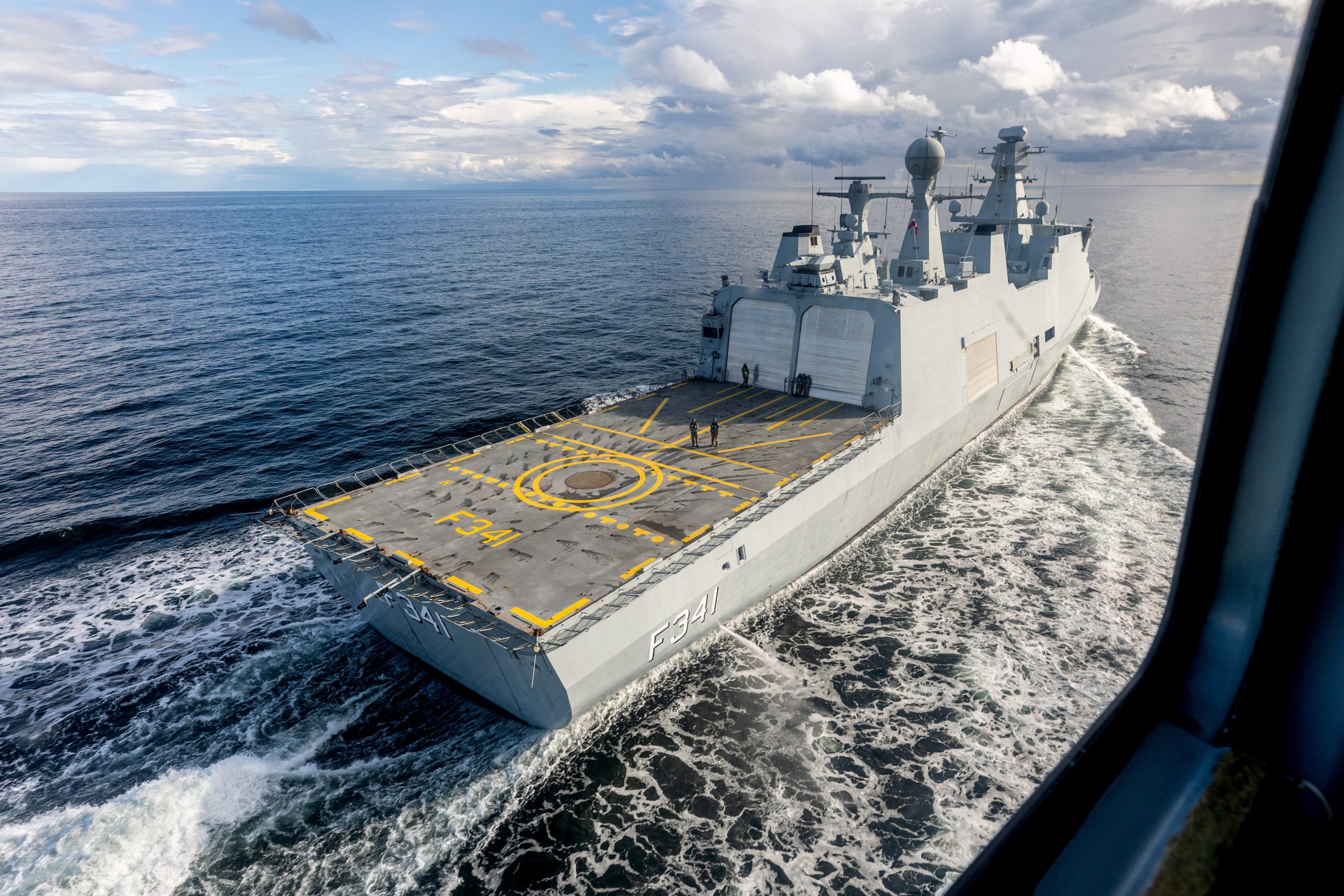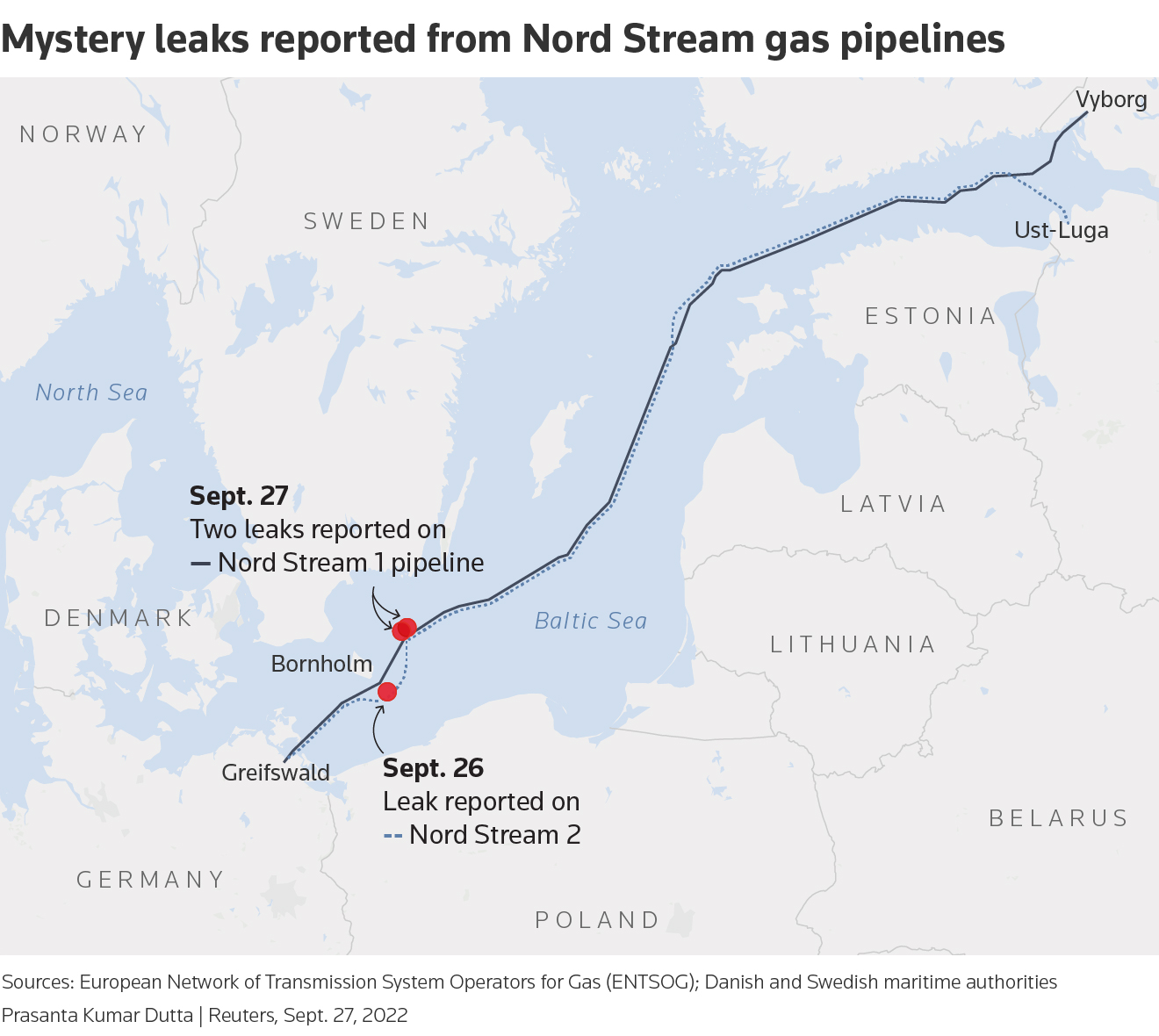
[elfsight_social_share_buttons id=”1″]
A preliminary investigation of damages to the two Nord Stream gas pipelines in the Danish part of the Baltic Sea shows that the leaks were caused by “powerful explosions”, Copenhagen Police said on Tuesday.
Swedish and Danish authorities are investigating four holes in the Nord Stream 1 and 2 pipelines, which link Russia and Germany via the Baltic Sea and have become a flashpoint in the Ukraine crisis.
Further investigations into the Sept. 26 ruptures in Denmark’s exclusive economic zone will be handled jointly by Copenhagen Police and the country’s Security and Intelligence Service.
World leaders have called the damages an act of sabotage but it still remains unclear who might be behind the detonations.
The Danish findings appeared to be similar to those of Swedish prosecutors, who said two other holes in the pipelines also seemed to have been caused by explosions and that the case was being investigated as an act of gross sabotage.
A section measuring at least 50 meters (164 feet) is missing from the ruptured Nord Stream 1 gas pipeline, Swedish daily Expressen reported on Tuesday after filming what it said were the first publicly released images of the damage.
Reuters could not independently verify that the images published by the newspaper were of Nord Stream 1.
Seismologists in Denmark have previously said they had registered tremors in the vicinity of the leaks measuring as much as 2.3 on the Richter scale and that the signals did not resemble those from earthquakes.
Danish police could not say when the investigation is expected to be concluded.
“It is still too early to say anything about the framework under which the international cooperation with e.g. Sweden and Germany will run, as it depends on several factors,” Copenhagen Police said in a statement.
Gas supply concerns
Dwindling flows of gas from Russia, which once supplied 40% of Europe’s needs, has left the European Union struggling to unite over how to respond to surging prices that have deepened a cost-of-living crisis for families and businesses.
The European Commission proposed a package of emergency measures on Tuesday to tackle high energy prices, including for EU states to start jointly buying gas. But it avoided proposing an immediate price cap on gas amid splits over the idea.
“We know that we are strong when we act together,” European Commission President Ursula von der Leyen said.
European states, meanwhile, have raced to protect other energy infrastructure from Norwegian energy installations to German power lines after blaming the Nord Stream leaks on sabotage, but they have stopped short of saying who was behind the ruptures that were discovered on Sept. 26.
Danish power and gas grid operator Energinet said it had expedited inspections of its own pipelines in the wake of damage to Nord Stream 1 and 2 but said it found nothing abnormal.
Russia, which built the pipelines with foreign partners, also says the damage was caused by sabotage but has pointed at the United States and its allies.

The Commission’s proposals on Tuesday are its latest response to an energy crunch that has prompted some European governments to draw up emergency plans that could mean rationing and blackouts this winter.
The Commission asked for EU countries’ approval to draft a proposal to set a temporary “maximum dynamic price” on trades at the Title Transfer Facility (TTF) Dutch gas hub, which serves as a benchmark price for European gas trading.
The Commission described this as a “last-resort measure,” and said the price limit would need to meet conditions, including that it did not cause Europe’s gas demand to rise.
Copyright 2022 Thomson/Reuters (Edited for FISM News by Michael Cardinal)
